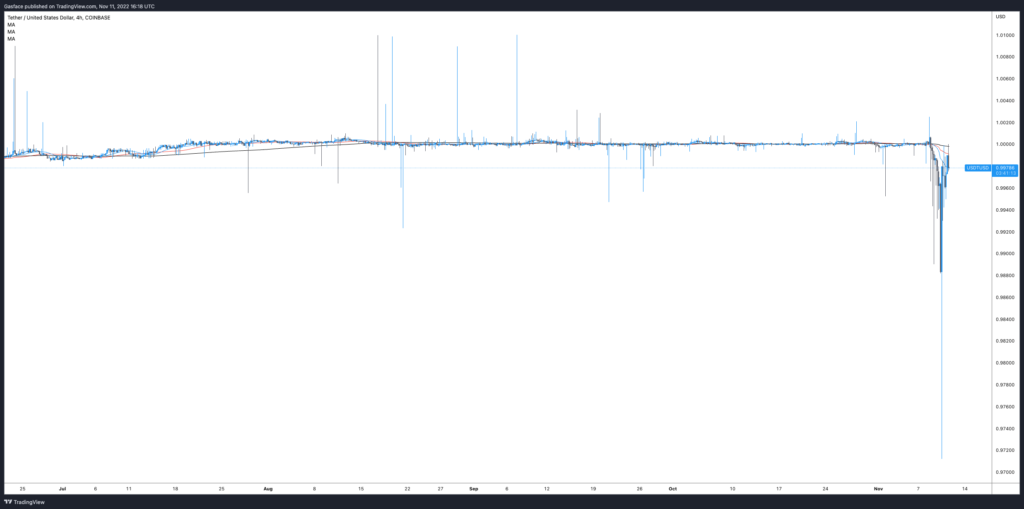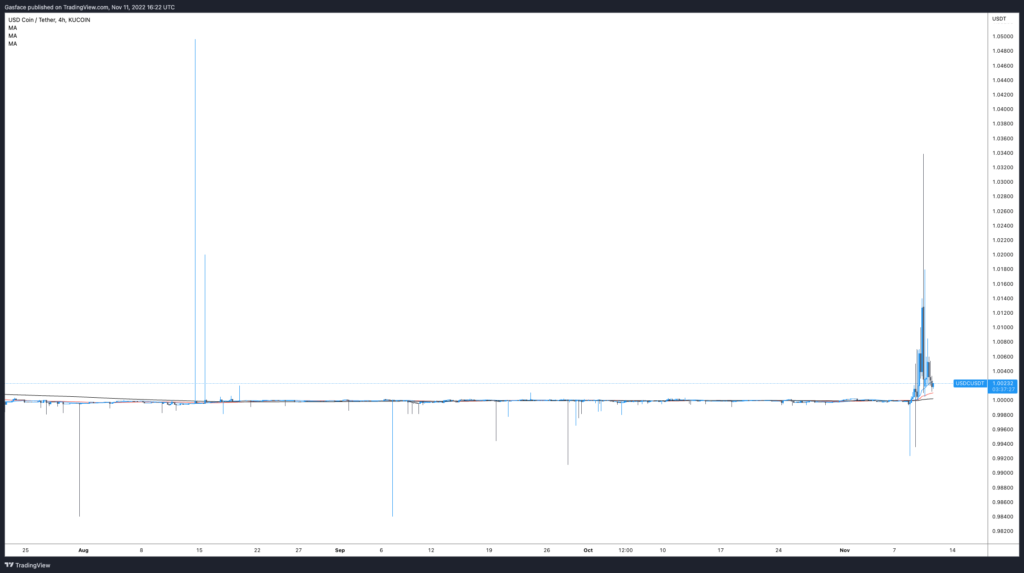FTX and Alameda’s Ponzi-like trading scheme has dealt a heavy blow to the whole crypto market. Many claim that Sam Bankman-fried, the exchange’s founder, secretly transferred $10 billion from FTX to Bankman Fried’s trading company, Alameda Research. These funds are taken from the customer’s fund. People claim that this FTX and Alameda scam has led to a major portion of that total disappearing since then. Some sources put the missing amount at about $1.7 billion.
This article will discuss three major developments to keep a close eye on.
According to this week’s statistics, Bitcoin has shown record-low volatility, giving altcoins an edge to paint some nice technical setups. On the other hand, on-chain data and technical analysis were starting to suggest that Bitcoin was midway through carving out a bottom, and most analysts believed that brighter days were coming.
Fast-forward to the present and the volatility spike the market received turns out to be a black swan event.
As we already know, FTX is broken down!
Alameda research is broken down!
BlockFi has stopped the withdrawals, showing dysfunctionality towards “operating as usual,” thereby stopping client withdrawals as allowed under our terms, which shows that the company is also broken down.
The contagion is emerging, and the shrapnel from this Krakatoa-level event tends to ripple throughout the crypto ecosystem.
At this time, it’s really hard to do a short-term investment thesis for assets by looking at the chart. The best thing uncertain investors do is either stick to a time-tested plan or simply do nothing. The most likely short-term outcome is volatility, which will stay high. In contrast, cryptocurrency prices will continue to rise for a while.
No trader is comfortable focusing on the potential negative results that lie ahead for cryptocurrency prices and the whole crypto industry. However, almost every investor is responsible for thinking about every possible outcome and having a contingency plan in place.
This way, you don’t freak out when shit hits the fan.
Below are some things you need to remember for the upcoming days.
USDT/USD vs. USDC/USD
Many stablecoins often lose their dollar peg during high-volatility events. When wild FUD spreads about BTC being hacked, banned, or failing, traders flock to dollar-pegged assets, causing stablecoin prices to rise above $1.00.
Similarly, during the crypto black swan events, sometimes Tether loses its dollar peg. This has happened many times in history, and usually, once the smoke clears, it restores the 1:1 peg.
On November 9, USDT/USD went below its dollar peg, dipping to as low as $0.97 at just one point, according to the Coinbase and Trading view data. Whereas USDT went below its peak, the USD Coin’s value rose incredibly to $1.01.

Though we won’t delve into the unconfirmed reasons behind the dislocation, you can easily find rumors related to Alameda Research and Tether on Twitter.
What’s worth noticing here is that false information, rumours, and lies can easily create panic. Therefore, it doesn’t matter if the rumours about Alameda research/tether are completely wrong.
They will act if rumors or news spread on social media and spook investors. In this case, many wills or are in the process of exchanging their USDT for USDC, Bitcoin, or any other stablecoins.
The same scenario happened during the Terra and Celsius implosion. According to data from KuCoin and TradingView, USDC’s price skyrocketed on May 12 from $1.00 to $1.06-$1.19. On the same day, USDT’s value dropped to $0.98 and $0.94.

When the price is dislocated and spread across exchanges, stablecoin conversions are costly. The experience of swapping from one to the other or from an altcoin to a stablecoin can become unlikely.
The USDT and USDC dollar pegs need consideration in this regard.
BTC price expectation
The sell-off on November 8 finally lifted BTC’s price out of the 146-day range, which had been between $24,500 and $18,600.
This is a significant range break. Considering the technical analysis, we can view a failure to regain this range and increasing selling as the price slices through the volume profile gap to find support in the $11,000 to $12,000 range.
Quite displeasing? YES, But this just depicts the current reality.
If Bitcoin can reclaim and hold the $18,000 handle, at least the price will be back in its previous range, which would be a great sign.

The Ethereum statistics show the same setup where Ethereum dropped out of a 148-day range between $2,000 and $1,250. However, the price has already reclaimed the previous range.
Most bearish traders have a downside target in the $700 range; however, it’s incredible to see how the price has rebounded for trading back around $1,250.
The market is looking for a stronger footing.
Many big investment groups and crypto-focused companies have exposure to FTX and Alameda research, which also shows these companies now have some holes in their balance sheets.
Some crypto-native companies also hold significant amounts of various altcoins and decentralized finance tokens (Defi). To salvage current losses, repay their loans, and meet client obligations, they may sell these BTC, altcoin, and DeFi token stashes on spot exchanges.
Most of the altcoins are already going down badly, and some are relatively illiquid, indicating a sharp rise in selling that could put strong downward pressure on prices.
Wrapping up
This discussion concludes that buyers should research and examine the market closely before buying. Also, some majority holders of the token or project recognize that the full impact of FTX’s multi-billion dollar implosion has yet to hit the sector.
Now, it’s the time to research and do due diligence before investing in any digital currency.













Discussion about this post